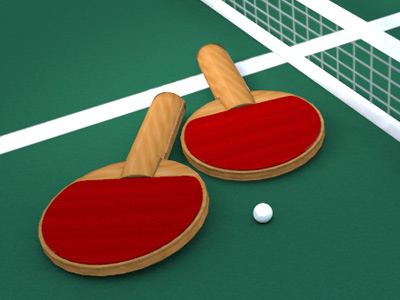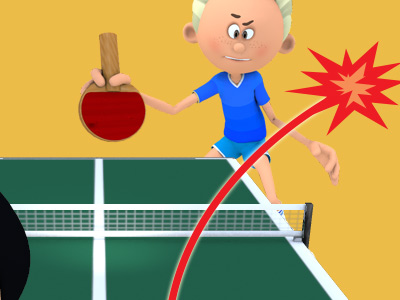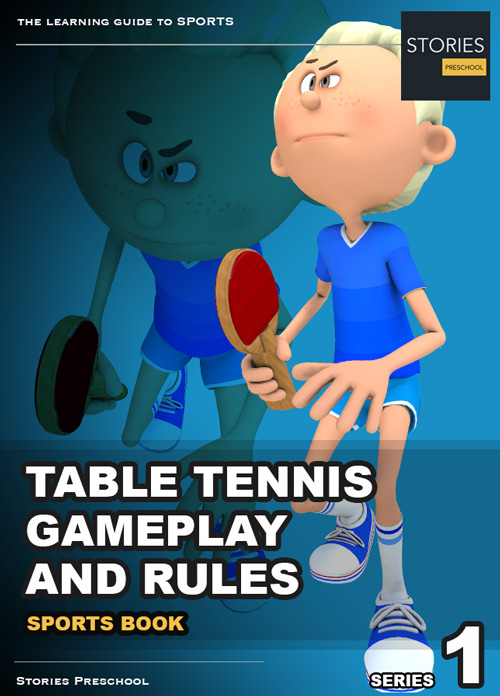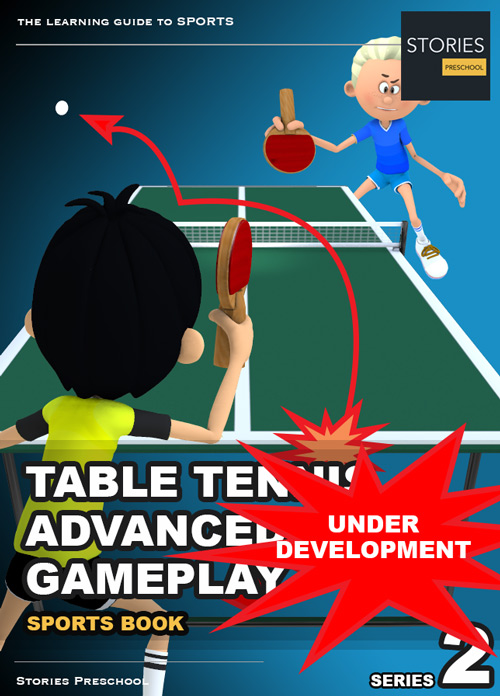Table Tennis
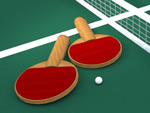
Gameplay of Table Tennis
Starting a Game
According to ITTF rule 2.13.1, the first service is decided by lot, normally a coin toss. It is also common for one player (or the umpire/scorer) to hide the ball in one or the other hand, usually hidden under the table, allowing the other player to guess which hand the ball is in. The correct or incorrect guess gives the "winner" the option to choose to serve, receive, or to choose which side of the table to use. (A common but non-sanctioned method is for the players to play the ball back and forth three times and then play out the point. This is commonly referred to as "serve to play", "rally to serve", "play for serve", or "volley for serve".).

Service and Return
In game play, the player serving the ball commences a play. The server first stands with the ball held on the open palm of the hand not carrying the paddle, called the freehand, and tosses the ball directly upward without spin, at least 16 cm (6.3 in) high. The server strikes the ball with the racket on the ball's descent so that it touches first his court and then touches directly the receiver's court without touching the net assembly. In casual games, many players do not toss the ball upward; however, this is technically illegal and can give the serving player an unfair advantage.
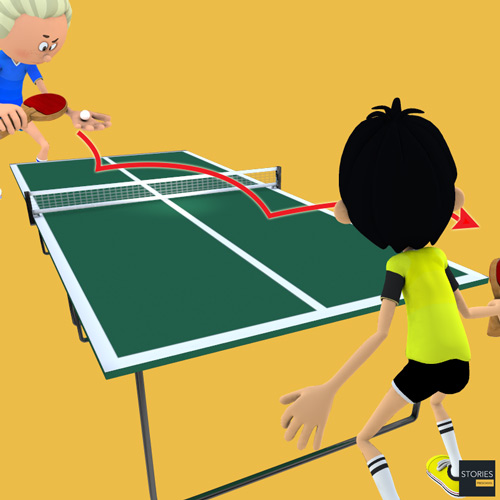
The ball must remain behind the endline and above the upper surface of the table, known as the playing surface, at all times during the service. The server cannot use his/her body or clothing to obstruct sight of the ball; the opponent and the umpire must have a clear view of the ball at all times. If the umpire is doubtful of the legality of a service they may first interrupt play and give a warning to the server. If the serve is a clear failure or is doubted again by the umpire after the warning, the receiver scores a point.
If the service is "good", then the receiver must make a "good" return by hitting the ball back before it bounces a second time on receiver's side of the table so that the ball passes the net and touches the opponent's court, either directly or after touching the net assembly. Thereafter, the server and receiver must alternately make a return until the rally is over. Returning the serve is one of the most difficult parts of the game, as the server's first move is often the least predictable and thus most advantageous shot due to the numerous spin and speed choices at his or her disposal.

Let
A Let is a rally of which the result is not scored, and is called in the following circumstances:
- The ball touches the net in service (service), provided the service is otherwise correct or the ball is obstructed by the player on the receiving side. Obstruction means a player touches the ball when it is above or traveling towards the playing surface, not having touched the player's court since last being struck by the player.
- When the player on the receiving side is not ready and the service is delivered.
- Player's failure to make a service or a return or to comply with the Laws is due to a disturbance outside the control of the player.
- Play is interrupted by the umpire or assistant umpire.
A let is also called foul service, if the ball hits the server's side of the table, if the ball does not pass further than the edge and if the ball hits the table edge and hits the net.

Scoring
A point is scored by the player for any of several results of the rally:
- The opponent fails to make a correct service or return.
- After making a service or a return, the ball touches anything other than the net assembly before being struck by the opponent.
- The ball passes over the player's court or beyond his end line without touching his court, after being struck by the opponent.
- The opponent obstructs the ball.
- The opponent strikes the ball twice successively. Note that the hand that is holding the racket counts as part of the racket and that making a good return off one's hand or fingers is allowed. It is not a fault if the ball accidentally hits one's hand or fingers and then subsequently hits the racket.
- The opponent strikes the ball with a side of the racket blade whose surface is not covered with rubber.
- The opponent moves the playing surface or touches the net assembly.
- The opponent's free hand touches the playing surface.
- As a receiver under the expedite system, completing 13 returns in a rally.
- The opponent that has been warned by the umpire commits a second offense in the same individual match or team match. If the third offence happens, 2 points will be given to the player. If the individual match or the team match has not ended, any unused penalty points can be transferred to the next game of that match.
A game shall be won by the player first scoring 11 points unless both players score 10 points, when the game shall be won by the first player subsequently gaining a lead of 2 points. A match shall consist of the best of any odd number of games. In competition play, matches are typically best of five or seven games.
Alternation of Services and Ends
Service alternates between opponents every two points (regardless of winner of the rally) until the end of the game, unless both players score ten points or the expedite system is operated, when the sequences of serving and receiving stay the same but each player serves for only one point in turn (Deuce). The player serving first in a game receives first in the next game of the match.
After each game, players switch sides of the table. In the last possible game of a match, for example the seventh game in a best of seven matches, players change ends when the first player scores five points, regardless of whose turn it is to serve. Service is subject to change on game point of the match. Upon the possible last point of the match, the player with the lesser score serves. If the sequence of serving and receiving is out of turn or the ends are not changed, points scored in the wrong situation are still calculated and the game shall be resumed with the order at the score that has been reached.
Expedite System
If a game is unfinished after 10 minutes' play and fewer than 18 points have been scored, the expedite system is initiated. The umpire interrupts the game, and the game resumes with players serving for one point in turn. If the expedite system is introduced while the ball is not in play, the previous receiver shall serve first. Under the expedite system, the server must win the point before the opponent makes 13 consecutive returns or the point goes to the opponent. The system can also be initiated at any time at the request of both players or pairs. Once introduced, the expedite system remains in force until the end of the match. A rule to shorten the time of a match, it is mainly seen in defensive players' games.
SPORTS
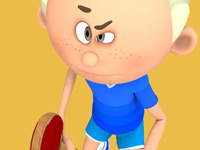
RESOURCES
This article uses material from the Wikipedia article "Table Tennis", which is released under the Creative Commons Attribution-Share-Alike License 3.0.
© Stories Preschool. All Rights Reserved.

